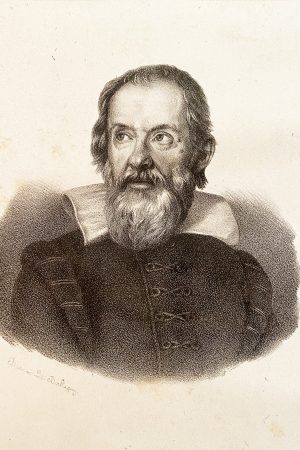GALILEO 1842-1856
- Description
Description
Galileo, Le opere, 16 vol., Firenze, Societa editrice Florentina, 1842-1856
First complete edition of the works of Galileo edited by Eugenio Albèri, assisted by Celestino Bianchi.
Vol. 1-5. Works on astronomy, 1842-1853
Vol. 6-10. Commercial letters, 1847-1853
Vol. 11-14. Works on physics and mathematics, 1854-1855
Vol. 15. Literary works, 1856
During the third congress of Italian scientists, held in Florence in 1841, the Grand Duke of Tuscany Leopold II favored the subscription for a complete edition of Galileo’s works, whose manuscripts and instruments the Tuscan state had researched and preserved until then.
The project was commissioned to Eugenio Albèri, (1807-1878), polygraph scholar from Padua by birth, but Florentine by adoption after his marriage to Virginia di Baillou, who had participated intensely in the cultural life of the city, as writer and publisher and had entered into relations with Vieusseux, who also collaborated on the project. Later his clear opposition to Piedmontese politics alienated most of the old friends of the Vieusseux group from him. They accused him of clericalism and of receiving subsidies from the Grand Duke .
From the systematic identification of Galilean manuscripts Albèri, assisted by Celestino Bianchi, journalist and moderate politician who later collaborated with Ricasoli (1817-1885), Albèri assembled the works of Galileo in 15 volumes plus a supplement. The publication, dedicated to the Grand Duke Leopold II, started in 1842 from the Florentine Publishing Company, of which Albèri had become director since 1840.
Just twenty-five years after the conclusion of this Galilean edition, i.e. in 1887, the Minister of Education Michele Coppino approved a project for a new national edition which was entrusted to Antonio Favaro (1847-1922), historian of mathematics, scholar and professor Paduan who made it his “life’s work”. He shared a new way of making history in which erudition and bibliophilia were integral and peculiar parts of the so-called positive historiography based on the centrality of the document and scrupulous respect of data and sources.
The monumental work, 20 volumes, was published between 1890 and 1909 by the publisher Barbera of Florence and was marked by the utmost philological rigor, diligently collating each manuscript variant, maintaining a strictly chronological order and expanding the size of the correspondence (4000 letters repeating at 1500 of the Albèri edition).
Please contact us for more information here










